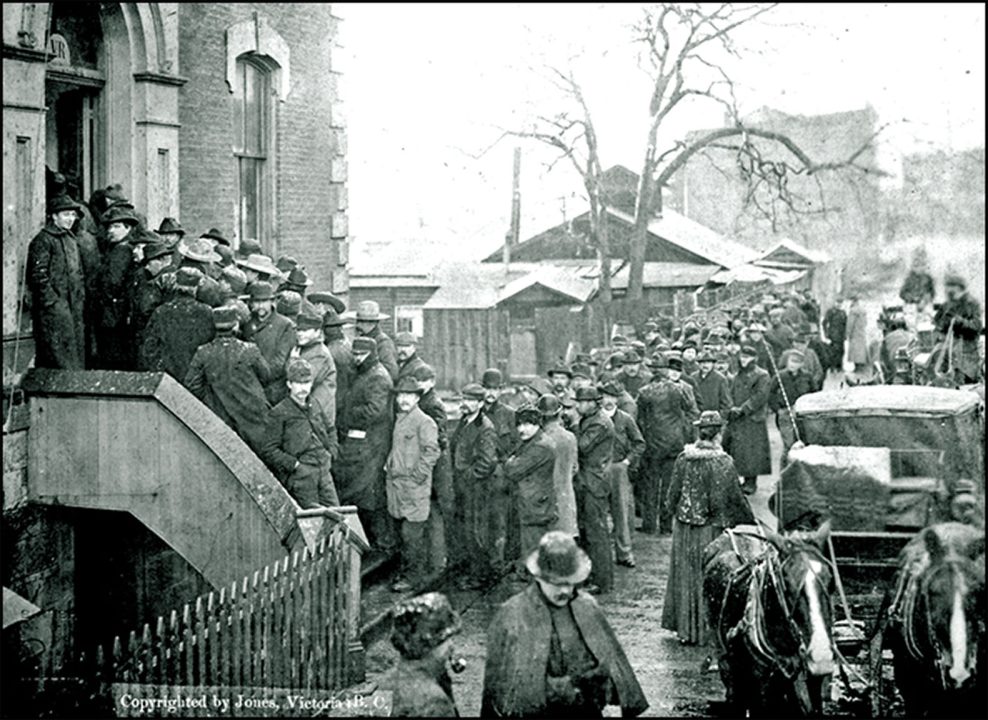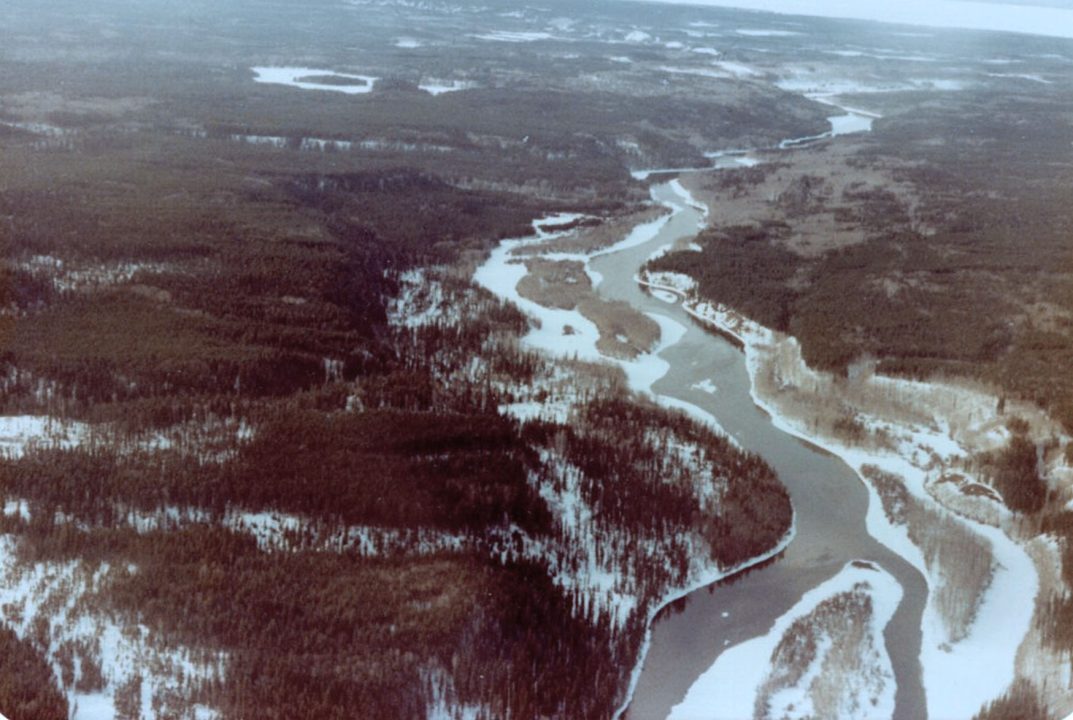“For the first time, I felt the lure of gold.”
When I first came to British Columbia, young and broke, a neighbour showed me a quart jar full of gold nuggets and offered me a partnership in a Cariboo gold claim near the famous Jack of Clubs Creek. The catch was I had to contribute the equivalent of $200,000 in today’s dollars to the purchase of equipment. For the first time, I felt the lure of gold. I still remember the unbelievable heft of that jar, and the dull glint of its contents, but the buy-in might as well have been $200 million. Impossible. To this day, I don’t know if I passed up a fortune.
Buried treasure
You can still find buried treasure in British Columbia, though it will likely mean spending your summer digging holes in the back country while fending off clouds of mosquitoes.
Every year, hundreds of erstwhile miners head to the province’s remoter regions hoping to find a profitable placer gold deposit—gold that has been eroded out of hard rock and redeposited as a so-called ‘placer.’
Placer mining is democratic; the initial investment can be minimal, basically a shovel and a gold pan. The time commitment, on the other hand, can be considerable.
In British Columbia, placer miners generally use water to separate nuggets or flakes of heavy gold from sand or gravel by ‘washing’ the lighter materials away. The technique is an ancient one, dating back over 4,000 years. Miners use modern machinery today, but the process is essentially unchanged.
Panning for gold
Panning for gold is simplest way to search for placers. A gold pan is a shallow metal or plastic dish, generally 40 cm or so in diameter, used to scoop up gravel. The prospector adds water to the gravel and then, using a rocking motion, swirls away lighter materials until, hopefully, only gold flakes or nuggets remain.
It’s labourious, and often fruitless. Yet the romance of treasure hunting continues to attract, as it did when British Columbia’s gold rushes impacted the early history of the province
Since the first rush in 1858, the province has yielded around six million ounces of placer gold, with much, much more unreported. An estimated 300 million ounces of the mineral remain, of which perhaps 15 to 20 per cent is placer.
The largest nugget found in the province came from Birch Creek in 1913 and weighed 83 ounces. The metal alone would be worth approximately US$150, 000 today. That’s just for the gold; its value as a rarity would be many times higher.
The province holds and keeps the second largest nugget, the Turnagain, found by Alice Shea near Atlin in the Thirties. Such treasures have a powerful allure. The times when larger than life characters such as Volcanic Brown, Ah Bau, Billy Barker, Chew Nam Sing, Twelve-foot Davis, and others pursued the glittering lure of gold may be past, but their descendants in spirit are still active today.
Gold fields and ghost towns
The economic and social consequences of the search for riches have been great. In the south, far from the gold fields, the city of Victoria boomed when governor James Douglas mandated that all miners, who were mostly Americans, had to get their miner’s licences there.
The mini-rush of the 1920’s – when the price of the metal rose from twenty dollars an ounce to thirty-five – temporally raised the population of virtual ghost towns, which were abandoned once again when the promise evaporated. In the Cariboo, Will-o-the wisp towns like Barkerville sprang up again and mostly disappeared within a year or two. Others, such as Quesnel, 100 Mile House, and Williams Lake survived. In the Omineca, the populations of Manson Creek and Germansen Landing edged up.

Staking a claim online
Today, an ounce of gold sells for over 1800 U.S. dollars, piquing renewed interest in placer mining at a time when picking up a claim has never been easier. Until 2006, a site had to be visited, staked by nailing metal tags to posts at each end of a one-kilometer-long partially cleared strip of ground, and registered. Technology has changed all that. A prospector now selects an open ‘cell’ on a map of provincially designated placer regions and pays for it online. The days when prospectors needed to range the back country testing gravels with their gold pan are gone.
This scheme has its negatives. Nicholas Gust of West Coast Placer likes the convenience but thinks it also makes claim-flipping much too easy. Flipping is when someone finds an unoccupied cell and fills out an online application, registering it online. This costs $100 or so per cell.
The successful claimant can then sell the property, often for many times the original price. Flipping can hurt legitimate prospectors for whom exploring the back country, and visiting a potential claim is a large part of the allure of the activity.
When unknown and unvisited properties are bought and sold online, the potential for dishonesty rises too. Mark Twain’s definition of a gold mine as a “hole in the ground with a liar standing next to it” still has some validity. It might even have been true of my missed Jack of Clubs opportunity of years ago.
“A gold mine is a hole in the ground with a liar standing next to it.”
Mark Twain
Interest in prospecting is tied to the price of gold. As the worth of gold skyrockets, so do the number of claims. Even sites long considered ‘played out’ are getting a second look. Researching the location of old, abandoned claims is very much a part of prospecting. According to Gust, there are currently 8,342 active claims in the province, a situation made easier by the online filing.
The claim system is administered by the ministry of energy, mines and low carbon innovation. The ministry of environment and climate change strategy oversees aspects of placer mining related to the environment. Water use, tree clearing, road building, and mine improvements fall under the jurisdiction of the ministry of forests. Four acts of the B.C. legislature also govern the industry—the Environmental Management Act, the Mines Act, the Water Sustainability Act and the Mineral Tenure Act.
Around 30 percent of miners make enough in a season to pay for their fuel and other supplies.
Nicholas Gust
Staking a claim is one thing, making a profit is another. Gold is measured by the troy ounce, equivalent to approximately 31 grams. A claim producing an ounce per tonne would be a very rich property indeed. However, such a find is extremely rare. Although the time spent searching for, or working a claim is considerable, Gust reckons only around 30 per cent of miners make enough in a season to pay for their fuel and other supplies.
Hefty upfront investment
Because of its high specific gravity, gold invariably works its way to bedrock. This can lie under many metres of overburden and must be removed with heavy equipment – as I know from personal experience. My own shared claims in the Omineca, which did produce a small amount of gold, would have needed an investment of many thousands of dollars just to get started. My partners and I decided to pass on the property.
My own shared claims in the Omineca … would have needed an investment of many thousands of dollars just to get started.
Even a small placer mine setup will need one or two excavators, a mechanical sluice or separator, settling ponds, a truck, a trailer for accommodation (permanent cabins not allowed), and various other pieces of equipment. Most operate from late spring to winter and access is essential. If this doesn’t exist it must be created. Building a road is costly, and permits are necessary. Staking a claim on top of a mountain – far from any way in and out – is usually not a good idea, although there are exceptions.

Placer mining can be controversial, especially when it takes place close to fish-bearing streams. Indeed, the industry faces increasing regulations and requirements, particularly in relation to Indigenous rights and environmental considerations, and there is a move to ban placer mining.
On the other hand, Nicholas Gust says current regulations and guidelines do a good job, ensure consultation with Indigenous peoples, and protect the environment. Instead of banning placer mining, B.C. should establish a reputation as a source for clean, ethical gold, Gust says, because “blood gold” is as much a problem in the world as “blood diamonds.”
Placer, when properly done, is relatively clean and sustainable, he says. Mines must be at least 10 metres from the riparian zone, they must be properly backfilled and the land reclaimed after use. Also, chemicals aren’t allowed. Mercury, for example, was used to ‘bind’ gold, but has been banned in Canada for decades. The toxic metal is still used – often illegally – in parts of South America, Africa, and the Philippines, polluting streams and poisoning miners and wildlife.

Future prospects
What does the future look like for placer mining in British Columbia in a jurisdiction where protecting the environment and Indigenous rights has become ever more important? Gust thinks the industry will go through some dark times before placer mining is better understood. He says proper enforcement of existing regulations and protocols provide sufficient protections that miners can live with.
One ex-miner told me that placer is basically just washing and replacing the rocks in a deposit of glacial gravel. It’s obviously more disruptive than that. But given its historical importance, economic potential, and recreational value, it seems unlikely the industry will be driven out of the province, no matter what the regulatory future looks like.


